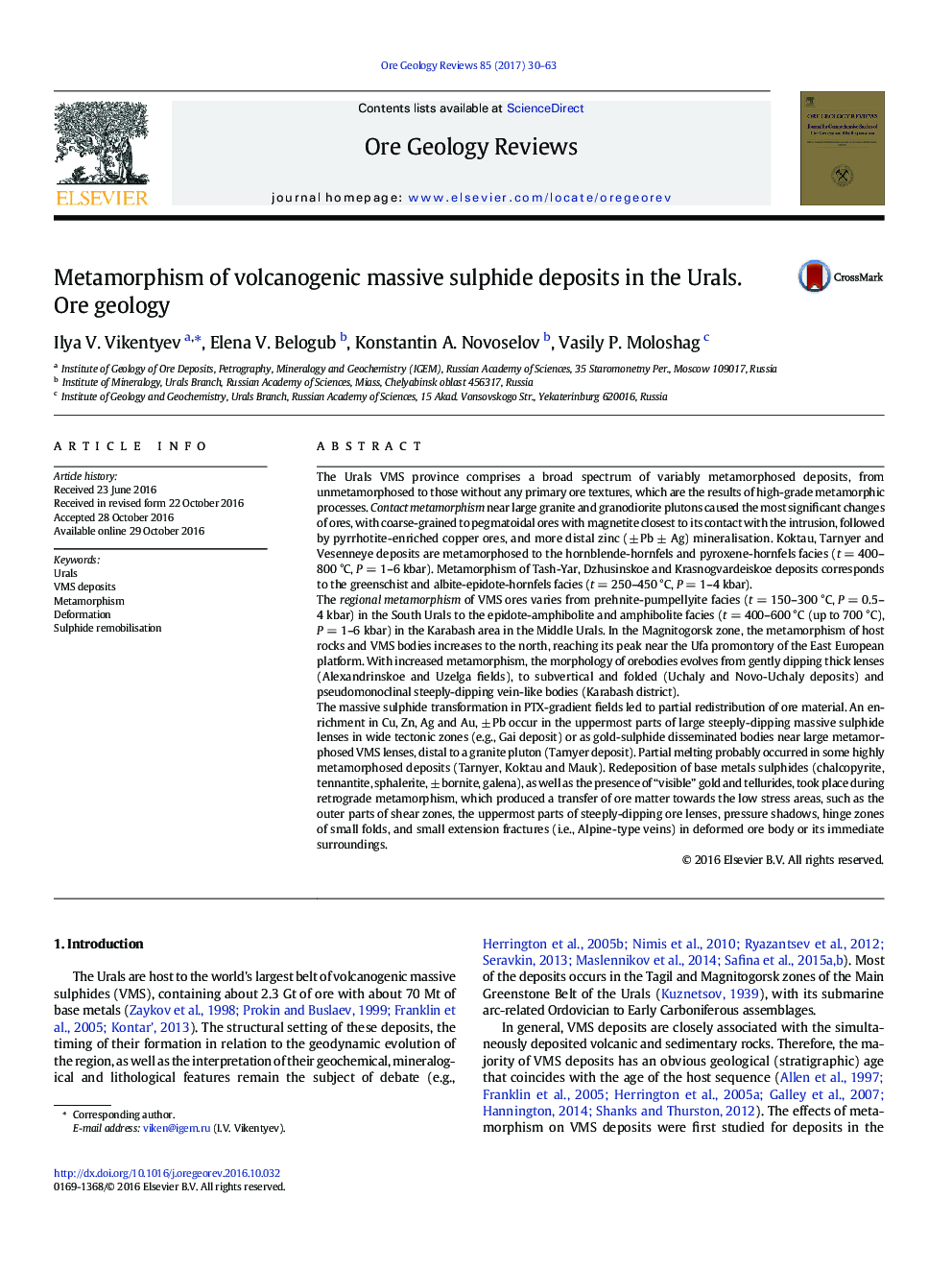| کد مقاله | کد نشریه | سال انتشار | مقاله انگلیسی | نسخه تمام متن |
|---|---|---|---|---|
| 5782501 | 1637222 | 2017 | 34 صفحه PDF | دانلود رایگان |
- Unique broad spectrum of VMS deposits metamorphosed under zeolite to amphibolite facies.
- Morphology of ore bodies evolves from gentle thick lenses to subvertical plates and veins.
- Regional dynamic and contact metamorphic types are often superimposed on each other.
- Metamorphism led to mechanical and fluid redistribution and partial melting of sulphide ore.
The Urals VMS province comprises a broad spectrum of variably metamorphosed deposits, from unmetamorphosed to those without any primary ore textures, which are the results of high-grade metamorphic processes. Contact metamorphism near large granite and granodiorite plutons caused the most significant changes of ores, with coarse-grained to pegmatoidal ores with magnetite closest to its contact with the intrusion, followed by pyrrhotite-enriched copper ores, and more distal zinc (± Pb ± Ag) mineralisation. Koktau, Tarnyer and Vesenneye deposits are metamorphosed to the hornblende-hornfels and pyroxene-hornfels facies (t = 400-800 °C, P = 1-6 kbar). Metamorphism of Tash-Yar, Dzhusinskoe and Krasnogvardeiskoe deposits corresponds to the greenschist and albite-epidote-hornfels facies (t = 250-450 °C, P = 1-4 kbar).The regional metamorphism of VMS ores varies from prehnite-pumpellyite facies (t = 150-300 °C, P = 0.5-4 kbar) in the South Urals to the epidote-amphibolite and amphibolite facies (t = 400-600 °C (up to 700 °C), P = 1-6 kbar) in the Karabash area in the Middle Urals. In the Magnitogorsk zone, the metamorphism of host rocks and VMS bodies increases to the north, reaching its peak near the Ufa promontory of the East European platform. With increased metamorphism, the morphology of orebodies evolves from gently dipping thick lenses (Alexandrinskoe and Uzelga fields), to subvertical and folded (Uchaly and Novo-Uchaly deposits) and pseudomonoclinal steeply-dipping vein-like bodies (Karabash district).The massive sulphide transformation in PTX-gradient fields led to partial redistribution of ore material. An enrichment in Cu, Zn, Ag and Au, ± Pb occur in the uppermost parts of large steeply-dipping massive sulphide lenses in wide tectonic zones (e.g., Gai deposit) or as gold-sulphide disseminated bodies near large metamorphosed VMS lenses, distal to a granite pluton (Tarnyer deposit). Partial melting probably occurred in some highly metamorphosed deposits (Tarnyer, Koktau and Mauk). Redeposition of base metals sulphides (chalcopyrite, tennantite, sphalerite, ± bornite, galena), as well as the presence of “visible” gold and tellurides, took place during retrograde metamorphism, which produced a transfer of ore matter towards the low stress areas, such as the outer parts of shear zones, the uppermost parts of steeply-dipping ore lenses, pressure shadows, hinge zones of small folds, and small extension fractures (i.e., Alpine-type veins) in deformed ore body or its immediate surroundings.
364
Journal: Ore Geology Reviews - Volume 85, May 2017, Pages 30-63
